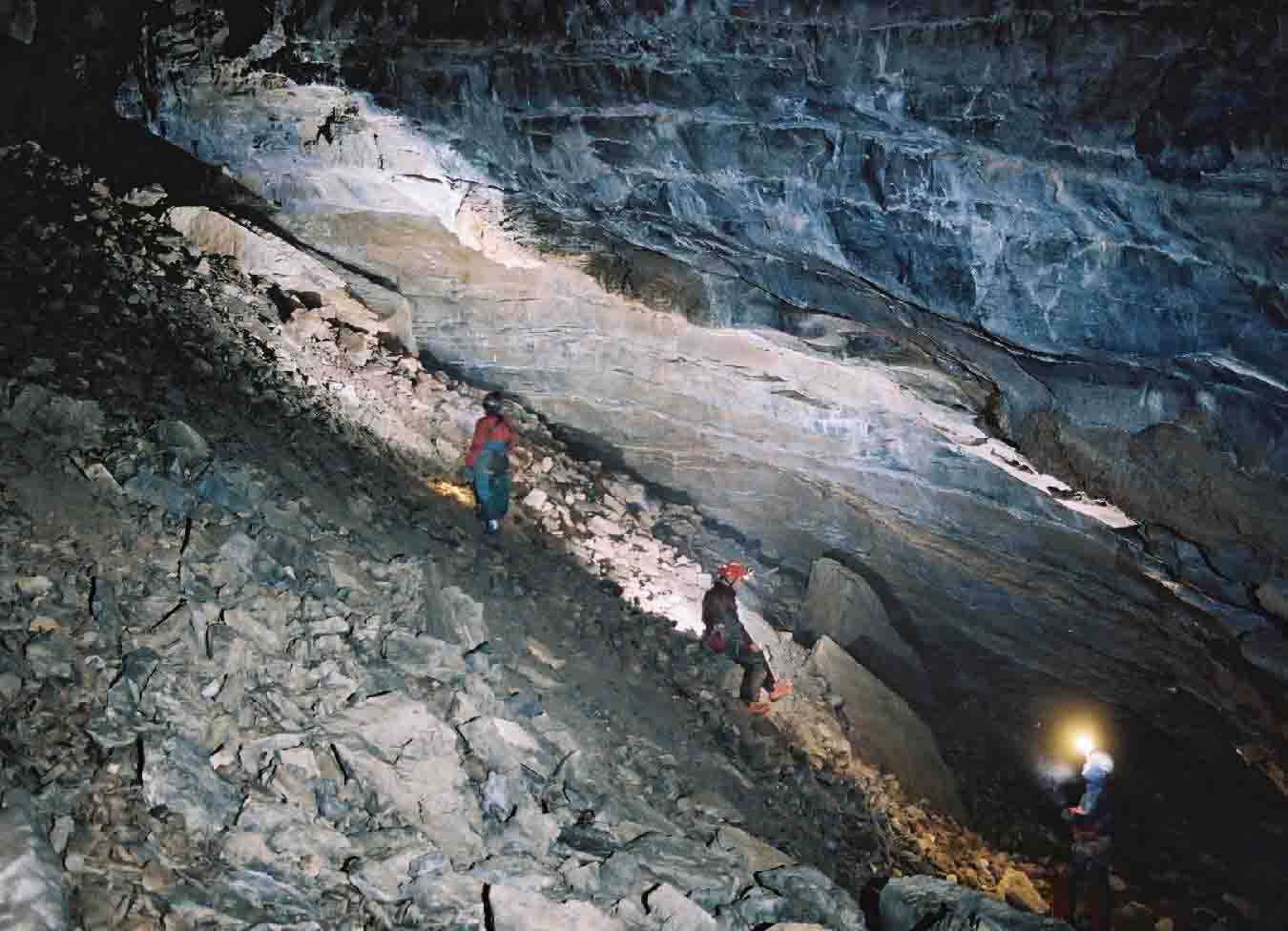|
The Project
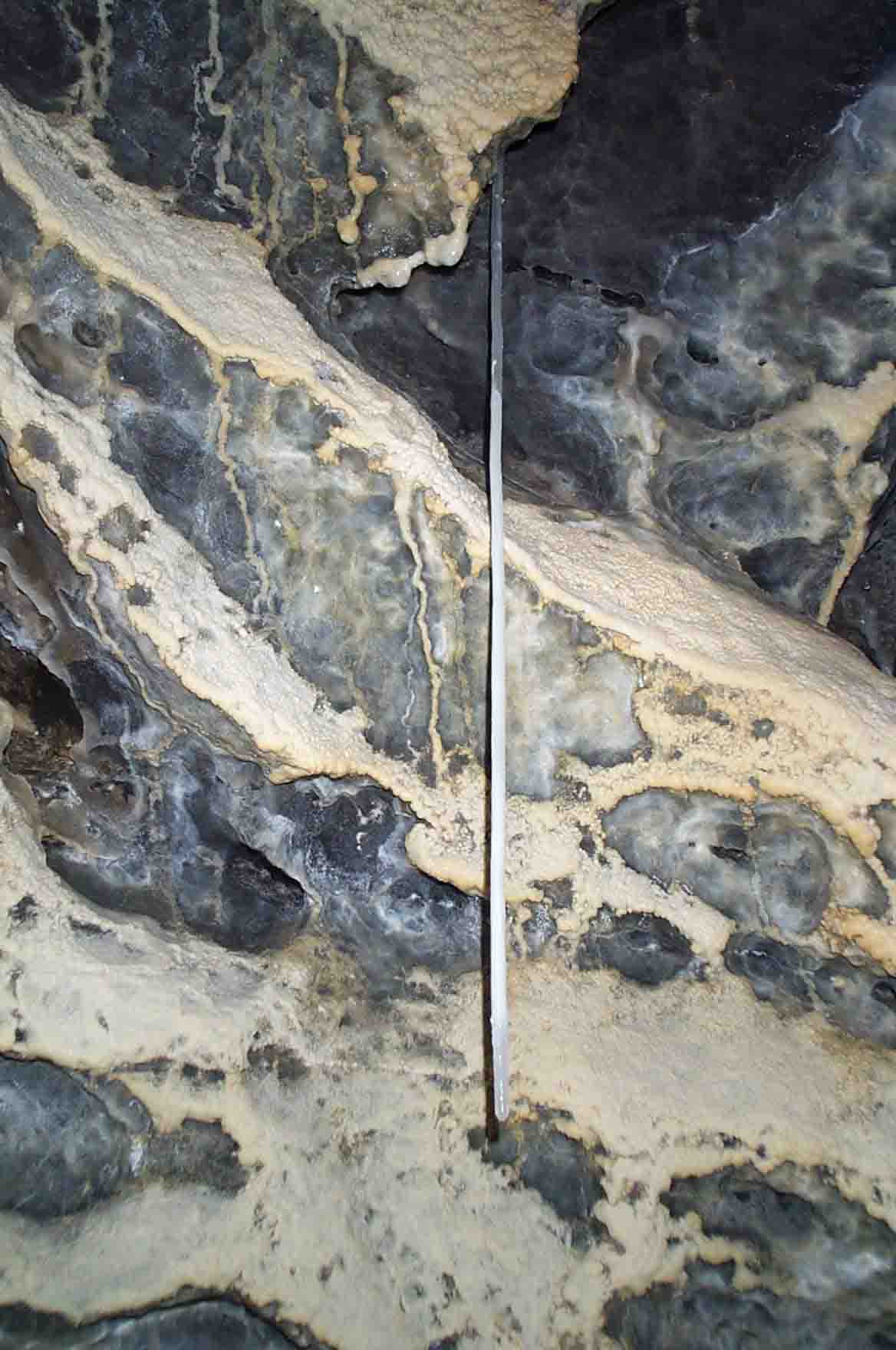
|
The
Redemption Cave Project is a combination of exploration, research, mapping,
and collection of baseline data for monitoring. B.C
Parks and local cavers are the stewards of Redemption Cave, and in order
to protect unique cave resources, strong baseline information is needed
to make informed management decisions.
Caves in the northern interior of the province have been poorly documented
and studied, and this project will address this knowledge gap in part,
and provide background information on the physical and biological attributes
of caves in the region.
This project was
financially supported by the Mountain Equipment Co-op Environment Fund,
Ministry of Water, Land and Air Protection (B.C. Parks), and members of
the Northern B.C. Caving Club. Club members also conducted all the field
work.
|
| Photo.
Lance Amos 2001 |
|
Home
Project History
Over the last two years
the Northern B.C. Caving Club members visited Redemption in all seasons of the
interior wetbelt: bugs, torrential rain, -30 celcius, and once again........
torrential rain. While sweating,
soaking, and freezing, the crew explored the depths.
|
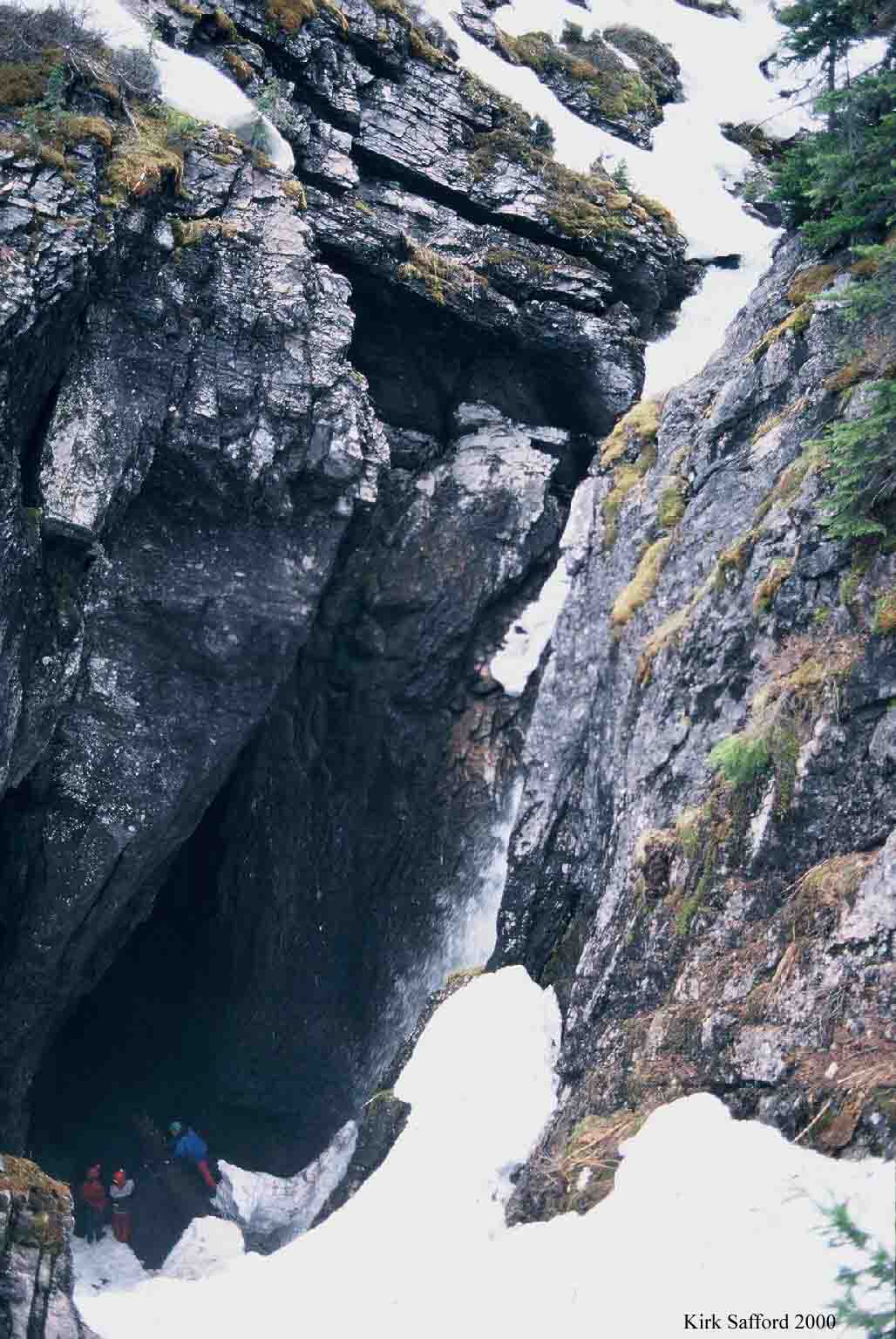
|
Project Highlights
June 2001. First Visit. 300 metres surveyed. Dead juvenile swift found
July 2001. Surveyed to 620m length, 136m depth. Black swifts noted using
entrance
August 2001. Additional 600 metres surveyed. Black swift nest platform
found, the first recorded in a cave entrance in the province (only four
are documented in B.C.). Bats observed in the cave.
April 2002. Cave surveyed to 1470 metres in length and 193 metres depth.
August 2002. Funding secured from MEC Environment Fund and B.C. Parks.
Photomonitoring stations setup. Surface recconoiter of karst features;
search for the resurgence. Collection of terrestrial and aquatic invertebrates.
Addtional passage surveyed.
February 2003. Night-time temperatures drop below -30 Celcius for the
first few days. More invertebrates collected, including Rhagiidid cave
mites. The cave is surveyed to over 2 km during the week long visit.
June 2003. The (probable) resurgence is found approximately 500 metres
below the entrance. A series of five resurgences may be related to the
cave.
|
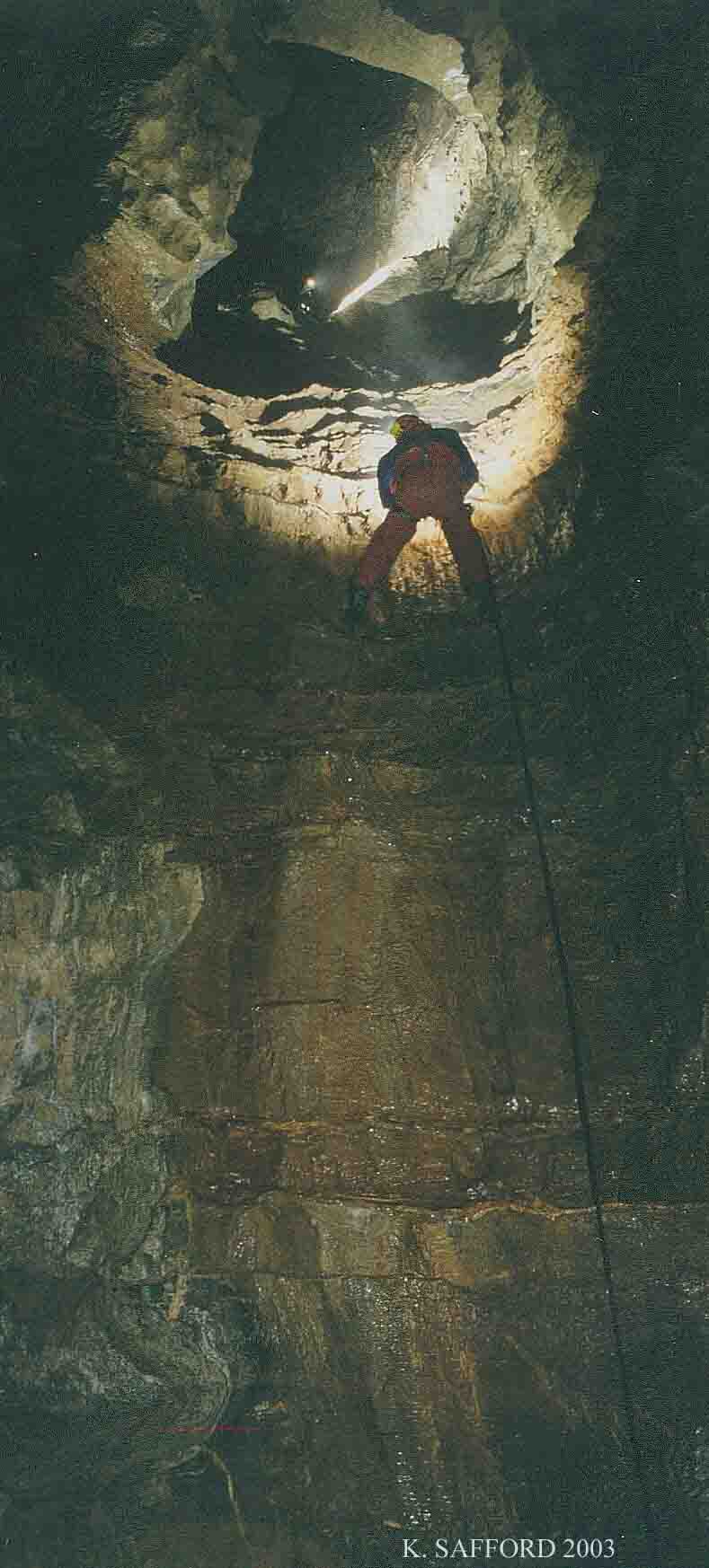
|
Three cavers assess how to negotiate
the 8 metre entrance
waterfall drop in June high water. Photo
K. Safford |
|
Descending
Cold Comfort Aven
Photo K. Safford |
Home
The Cave
In
the over two kilometers surveyed to date, there is only 10-15 metres where any
crawling is required. The passage is predominantly canyon with the ceiling frequently
lost in a black void. The deepest point in the cave is close to 200 metres from
the entrance, and over 360 metres directly below surface.
The entrance series is
unusual as the cave corkscrews for 360 degrees in canyon passage; the stream
passes beneath itself in a sump, before re-emerging in canyon passage and continuing.
In a chamber called the Perfect Storm, the stream cascades over a 30 metre waterfall.
After another 200 metres downstream, the water disappears beneath a blank wall
in the Eveready Room and has yet to be found again. At over 130 metres in length
and up to 14 metres wide, the Eveready Room forms one of the largest chambers
in a Canadian cave.
|
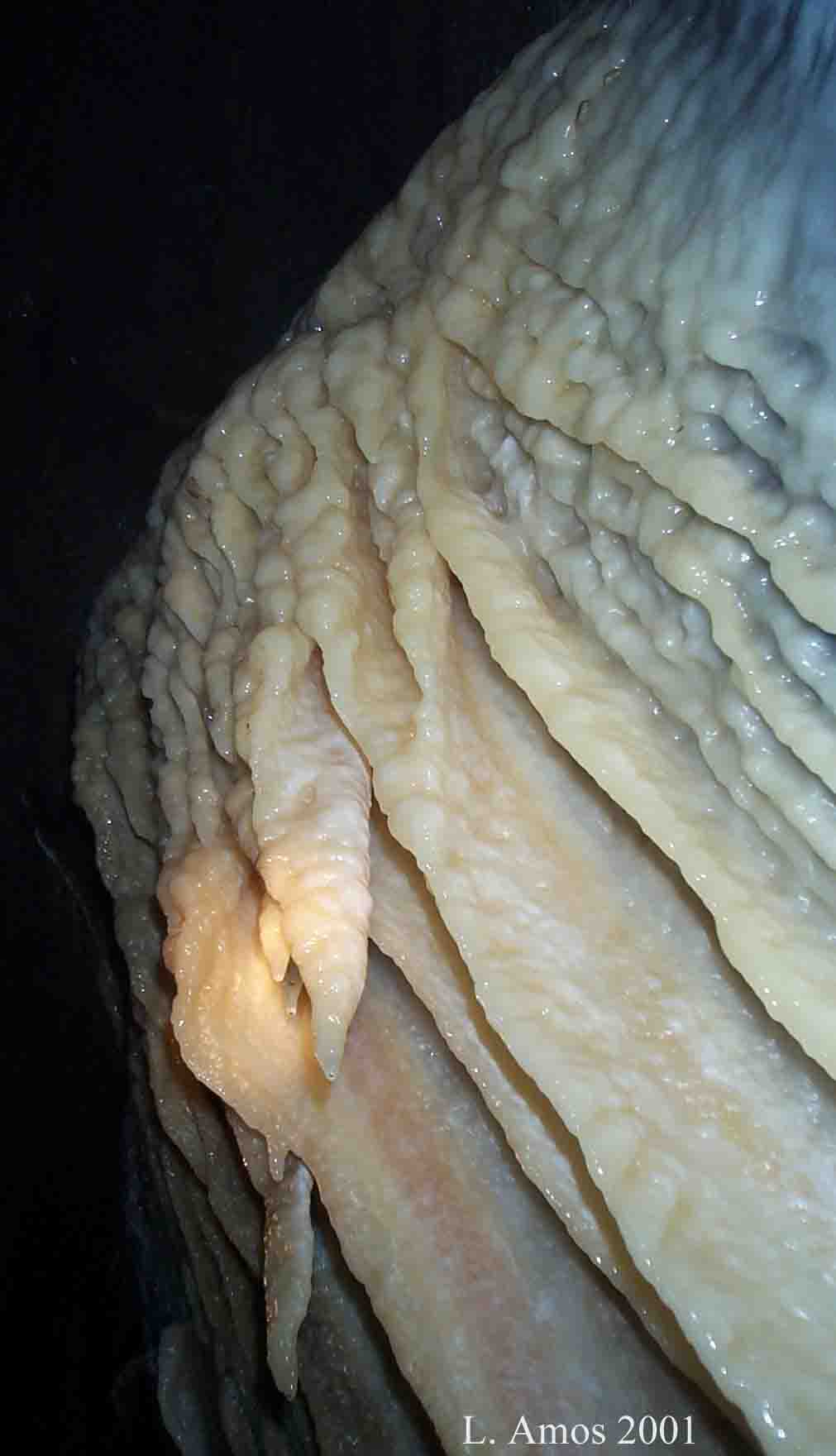
|
Cave
Formations
Fossil side passages
in Redemption contain a motley of calcite formations, some of which are
unusual. These include stalagmites, stalactites, soda straws, cave coral,
bacon strips, and flagged soda sraws.
These passages are very well decorated in comparison with other northern
B.C caves.
|
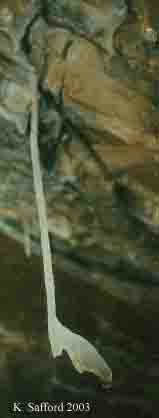
|
|
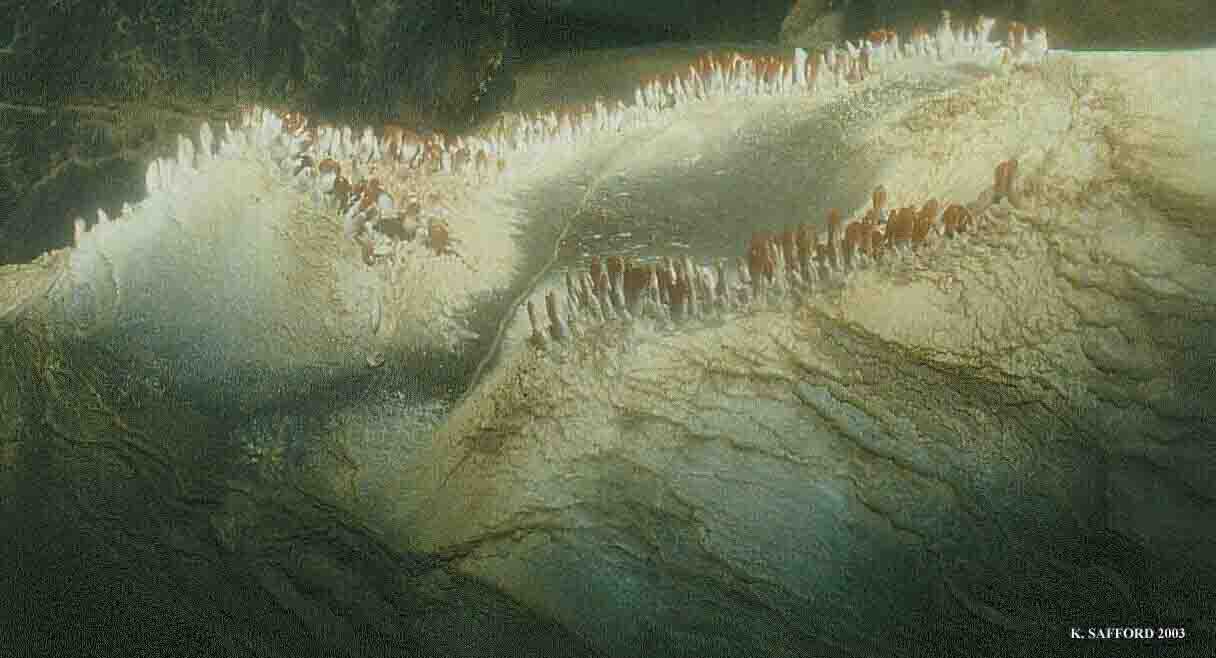
|
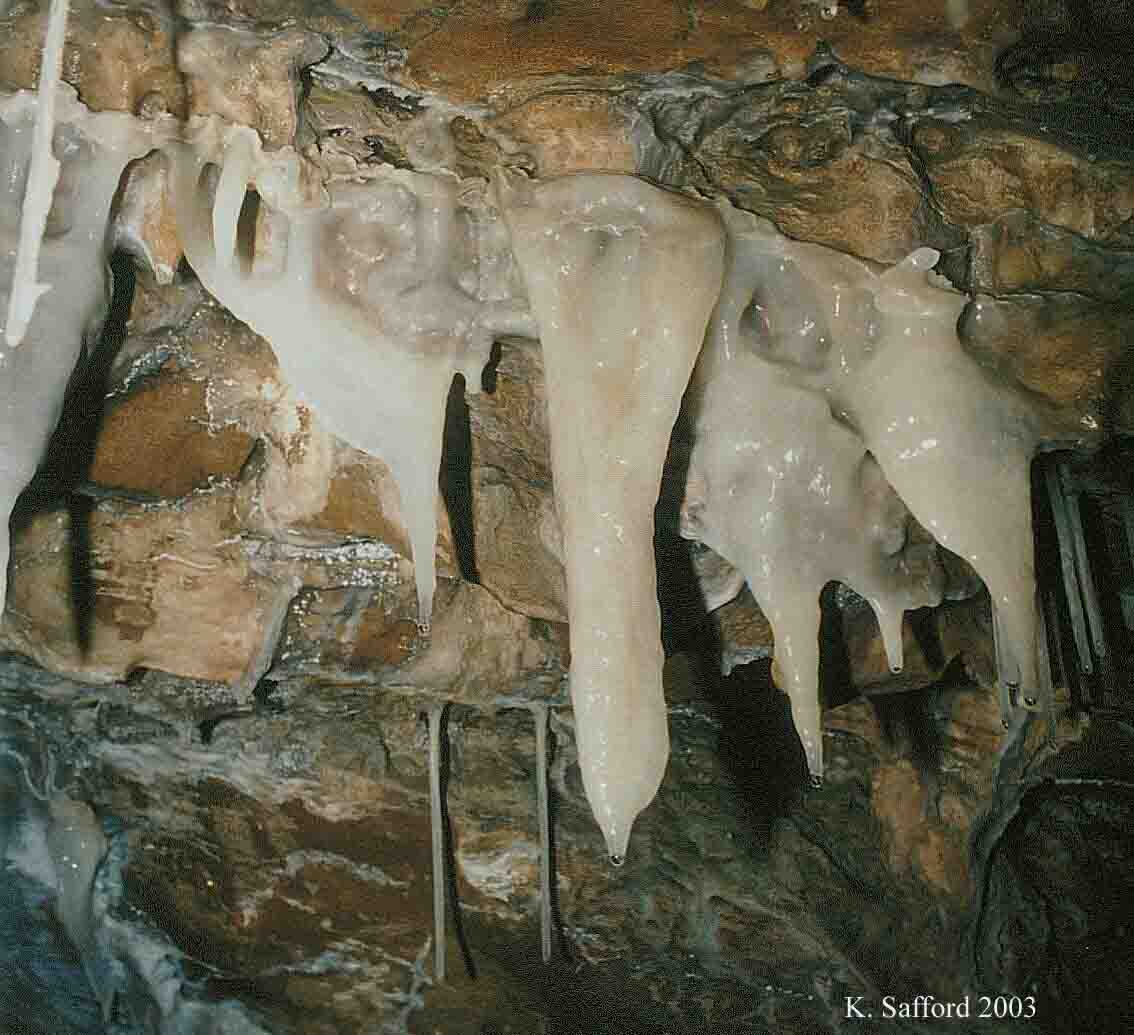
|
|
1. Flowstone
|
2. 'Matchstick' formations
|
3. Soda straws and stalactites
|
4. Flagged soda straw |
|
Redemption Seasons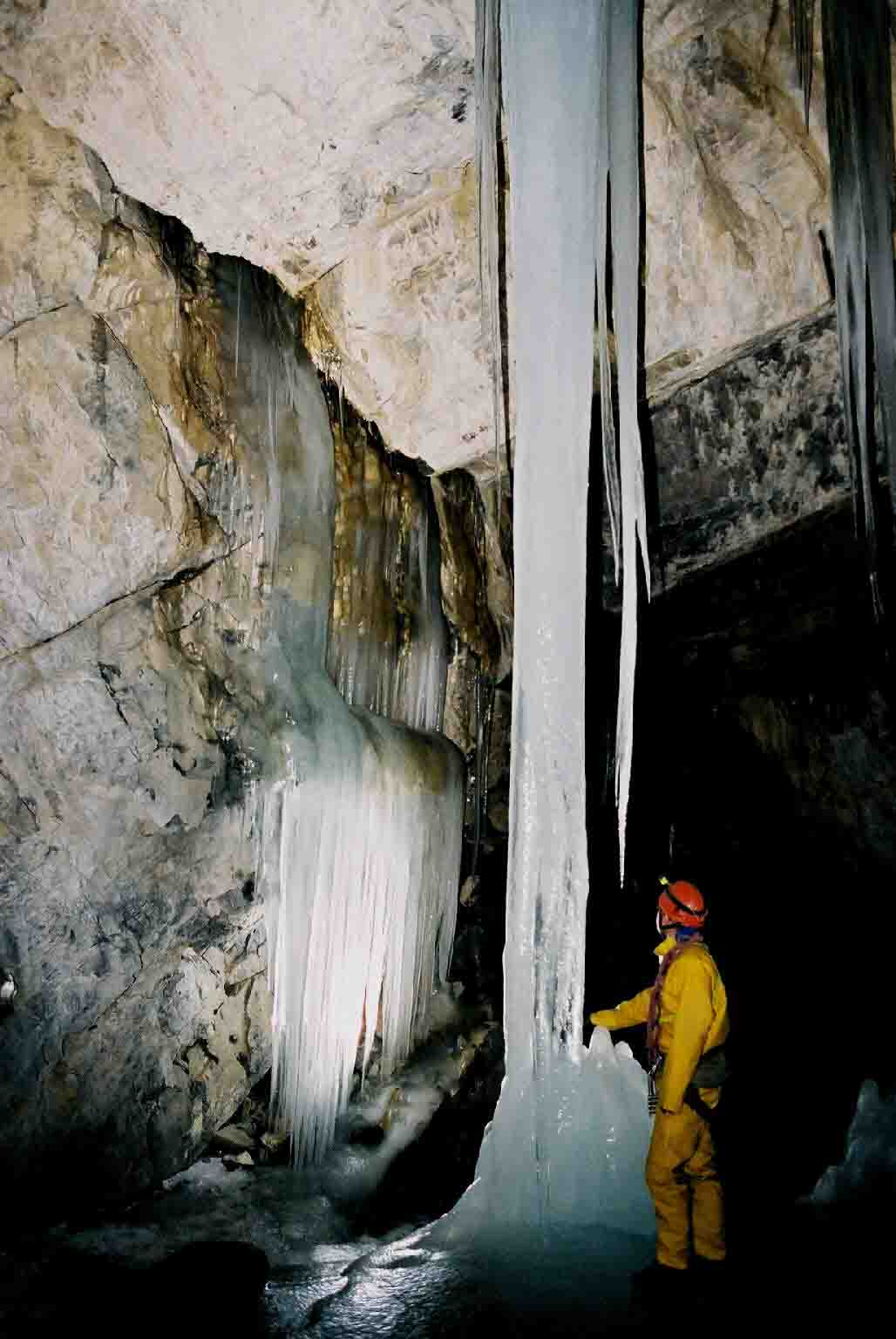
Caves really
don't have seasons as deep-cave temperatures remain fairly constant
year-round
(with the exception of the entrance zone)....even when its -30 Celcius
outside. The only seasonal changes in Redemption are the water levels,
air currents and the summer influx of organisms and organic debris.
In spring, meltwaters
roar through the cave. The Perfect Storm becomes thunderous, generating
high winds and sending sheets of water tens of metres down the passage.
In the late summer and fall the water levels drop. Winter is the dry season,
though water still flows allowing aquatic invertebrate communities to
survive. During winter months the first 150 metres of stream passage freeze,
creating a river of ice and magnificent ice formations.
|
|
Photo Kirk Safford 2002
|
Home
|
Biodiversity
Generally cave entrances
are the most biologically-active portion of a cave, forming transition
habitat between the surface and the underground environment, and Redemption
is no different. In
summer the entrance provides the cool damp conditions required for black
swift nesting habitat. It is one of only four known black swift nesting
locations in B.C., and the first in a cave. Bushy-tailed woodrats and
porcupines have used Redemption Cave entrance features for shelter during
summer and winter.
Bats were noted deep
in the cave in August 2001, indicating the cave provides roosting habitat.
Bat hibernation in the cave has yet to be determined, however deep cave
systems such as Redemption provide the stable winter conditions required
for hibernation.
Over
800 invertebrates in 26 families have been collected in Redemption to
date, with more identifications to come. The cave lends itself to an interesting
natural experiment by continually washing aquatic invertebrates into an
environment with no sunlight, thus no primary production. Most aquatic
taxa collected in any significant number were less frequent farther into
the cave. However some taxa, such as Rithrogena mayflies were found
in similar numbers deep into the cave, suggesting the cave environment
does not impede the life cycle of this taxa. Terrestrial Ceratophysella
springtails and predatory Phlaeopterus rove beetles were similarly
found deep in the cave.
|
|
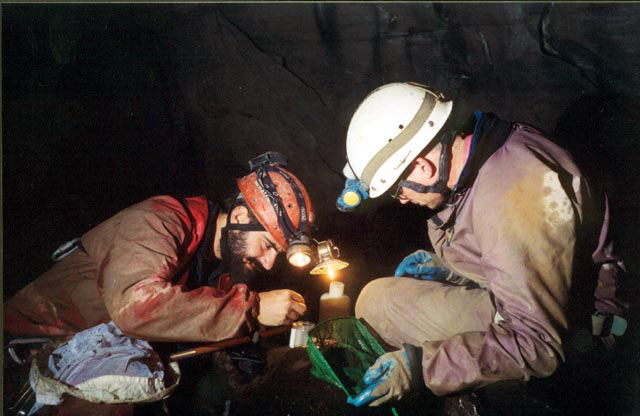
|
Many other interesting
discoveries were found:
- One particular
mite taxon, Robustocheles occulta is a true troglobite. This
species has been found in Washington, Iowa, Banff Alberta (Castleguard
Cave), and more recently Alaska. This collection is one of the northern-most
collections of cave-adapted fauna in North America. According to Zacharda
and Pugsley (1988) R. occulta survived the last glaciation beneath
the ice cap in these caves. There may be other species in Redemption
that did the same.
- A springtail taxon
(Onychiuridae) may also be a cave dweller (genus and species to be determined).
- Capnia sextuberculata
stoneflies found hatching only in the cave entrance series in early
spring further suggests diversity associated with entrance habitat (allowing
early emergence). There is only one other collection of this taxa in
B.C., near Lytton.
- Many specimens
were collected in winter, indicting the cave provides refugia for some
invertebrates during winter.
These results provide
additional argument for considering karst landscapes as an ecological
unit given the unique diversity of cave associated taxa.
|
| Bug-guys
netting invertebrates from the stream. Photo Clive Keen
2002 |
Home
Project Summary/ Project
History/ The Cave (formations)/ Biodiversity/
Mapping/ Invertebrate
collection/ Surface Karst Exploration/
Photomonitoring
Northern
B.C. Caving Club 2003
Updated
September 2003

